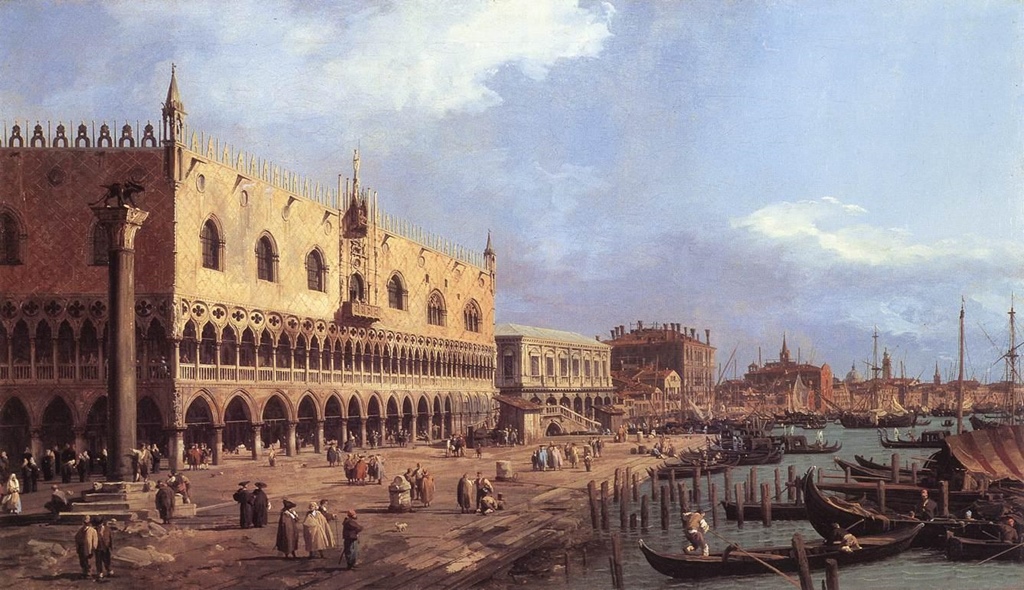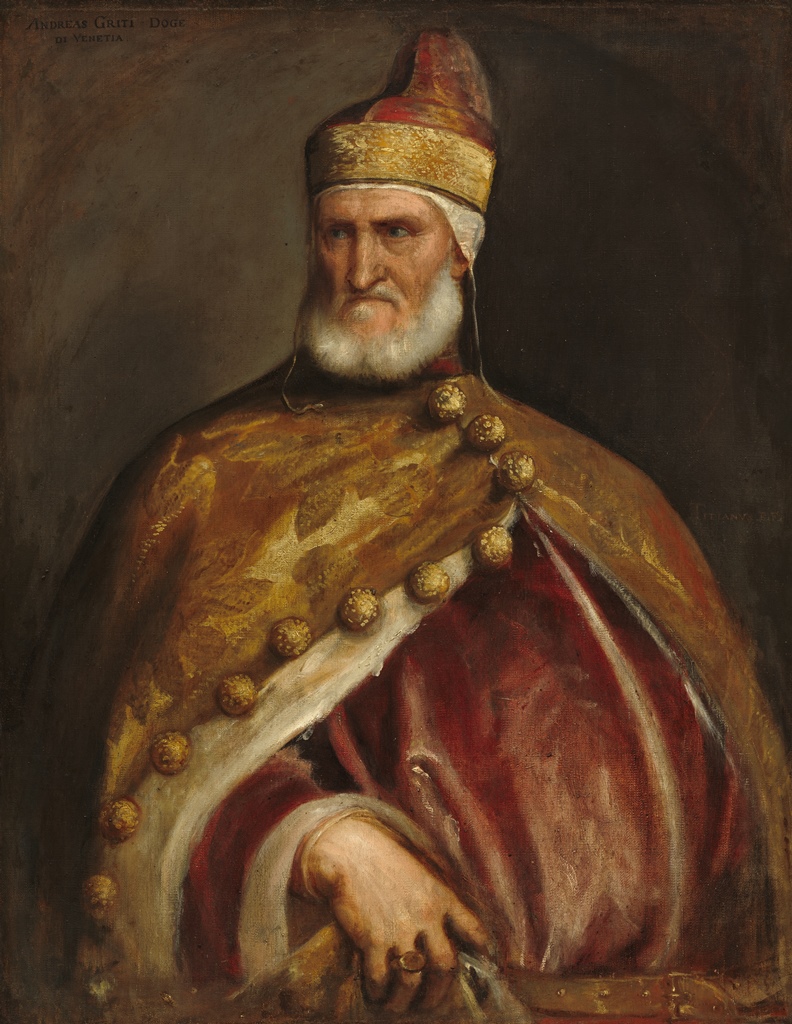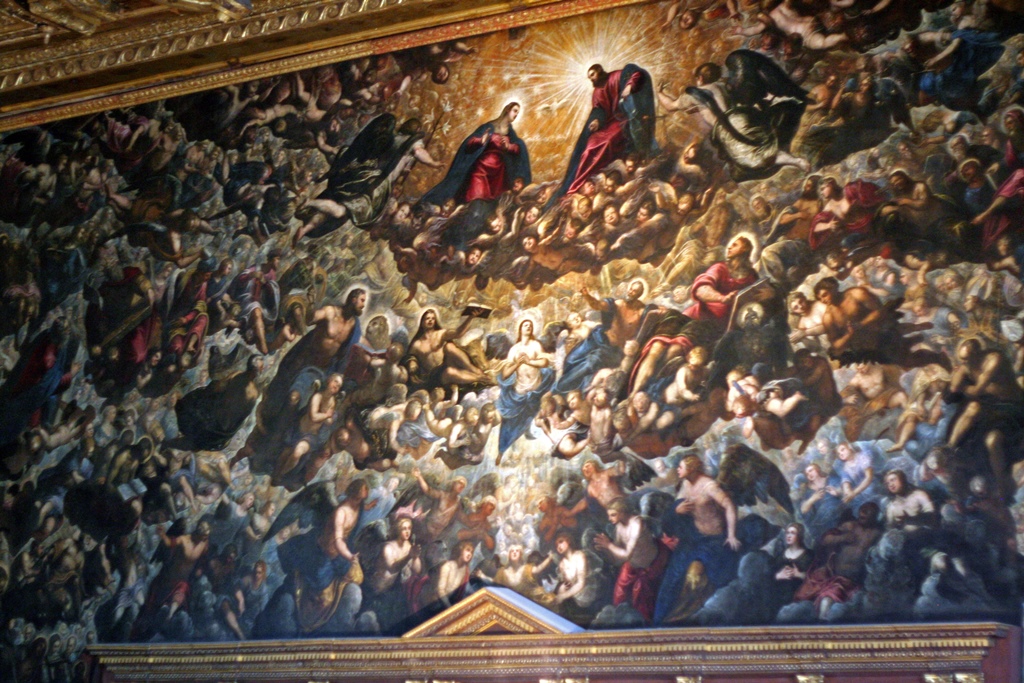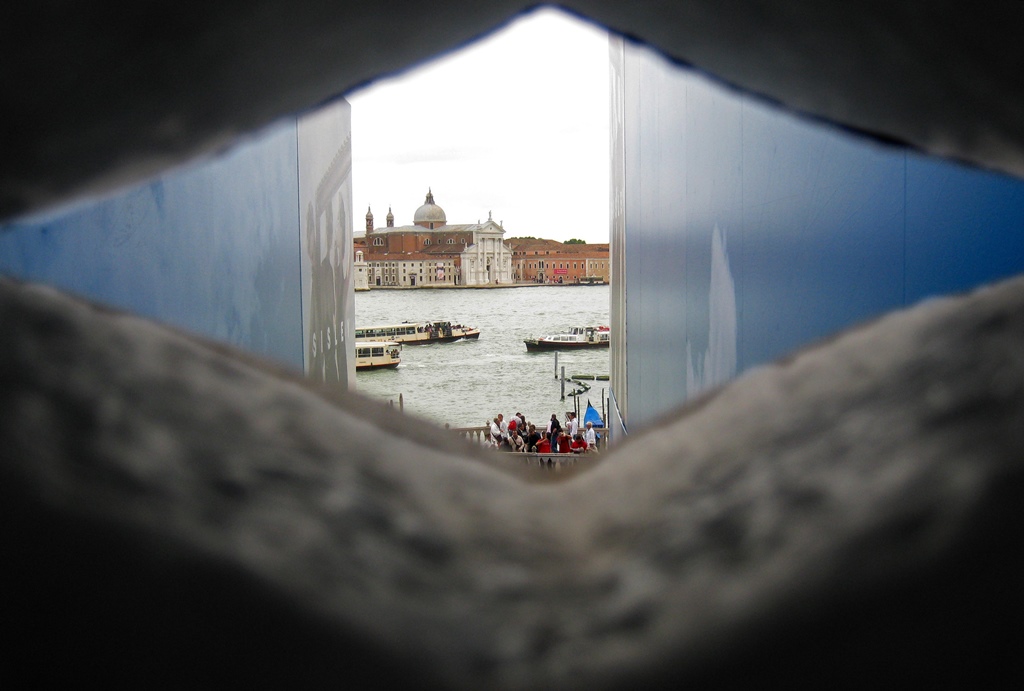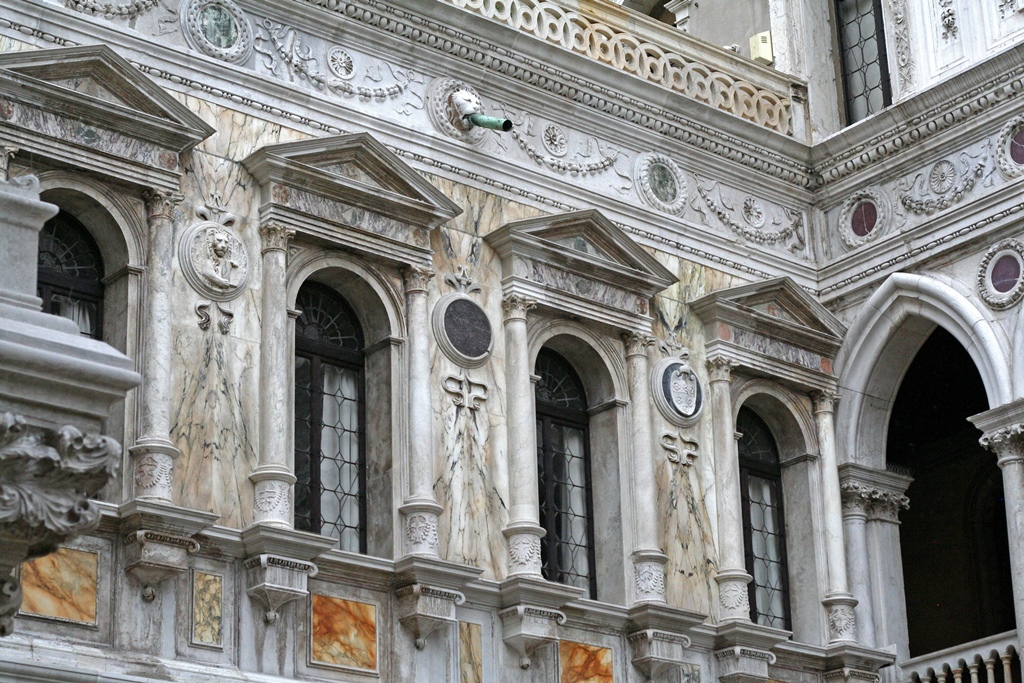Riva degli Schiavoni, Canaletto (1730)
The Doge's Palace was for hundreds of years the center of Venetian government and
the residence of the Doge, the republic's chief magistrate. Doges were elected by
members of the aristocracy through different schemes that evolved over the years,
gradually becoming more complex. The extent of the Doge's power also evolved over
the years, though he was generally elected for life. The position of Doge seems
to have been established as early as 700 A.D., but the current palace wasn't
constructed until the 1309 through 1424 period, sort of. Since that time there
have been a number of fires and repairs and renovations and expansions, but since
1797 and the French takeover there have been no Doges.
A Doge (Andrea Gritti), Titian (ca. 1546-50)
After crossing back across the Accademia Bridge, we went in search of lunch and
found it at a cafeteria sort of place and then headed back toward Piazza San Marco.
We'd heard that the tickets to the Doge's Palace were now combination tickets that
included admission to the Correr Museum, a museum of Venetian art and history that
occupies a good portion of the building space surrounding the Piazza. We'd also
heard that the line to get these tickets was often much shorter at the Correr
Museum than at the Doge's Palace. At this point Philip announced he'd seen enough
of museums for awhile, and that he wanted to wander around Venice by himself.
While he embarked on this mission, the remaining three of us went in search of the
Correr's entrance, eventually finding it at the end of the Piazza opposite St.
Mark's Basilica (behind the temporary stage). The Correr Museum has an
interesting collection of paintings, sculpture and historical items, and we'd have
liked to take a closer look at everything than we did, but we were worried about
running out of time to see the Doge's Palace properly, so our visit was somewhat
rushed. The Correr also has the apparently standard Venetian no-photography rule,
with which we complied.
On exiting the museum, we found that the weather had taken a turn for the worse,
becoming a steady drizzle. We walked over to the Doge's Palace (the entrance is
on the waterfront side) and used our combination tickets to enter. After the
entrance, we took a flight of stairs to our right up to a walkway that gave us a
good view of the wet courtyard. At the north end of the courtyard was an
elaborate façade to what was apparently the Doge's personal entrance to the
Basilica, which he used as his private chapel.
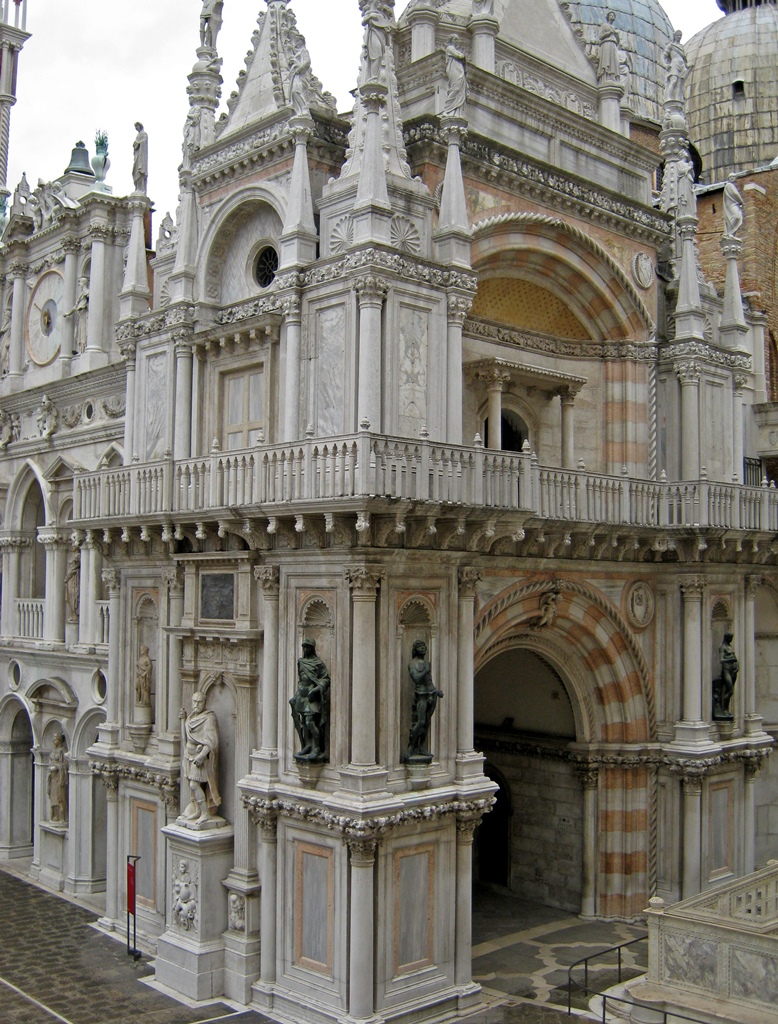
Foscari Arch, North End of Courtyard
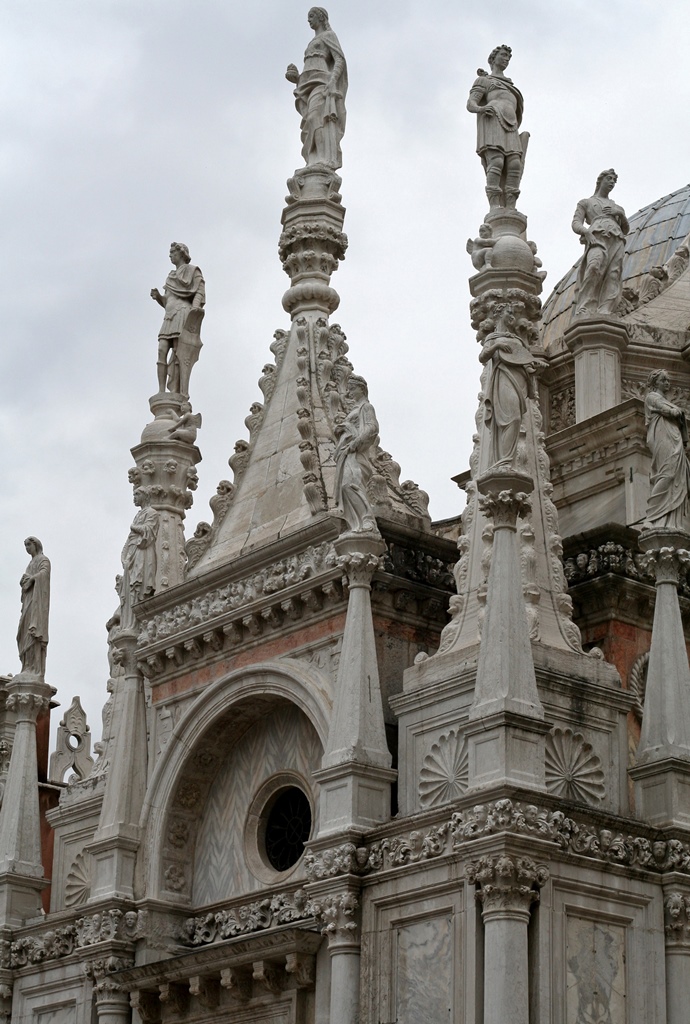
Statues Above Foscari Arch
North End of Courtyard
Photography in the Palace was technically prohibited, but we were able to get a few
pictures here and there (and I've added a couple from the Internet). From the walkway,
we took another stairway up and walked through several rooms, including both the
Doge's apartments and official rooms for the running of the republic. There were many
magnificent paintings and paneled ceilings by Veronese, Tintoretto and others. One of
these paintings, Tintoretto's Paradise, has been billed as the largest oil
painting in the world.
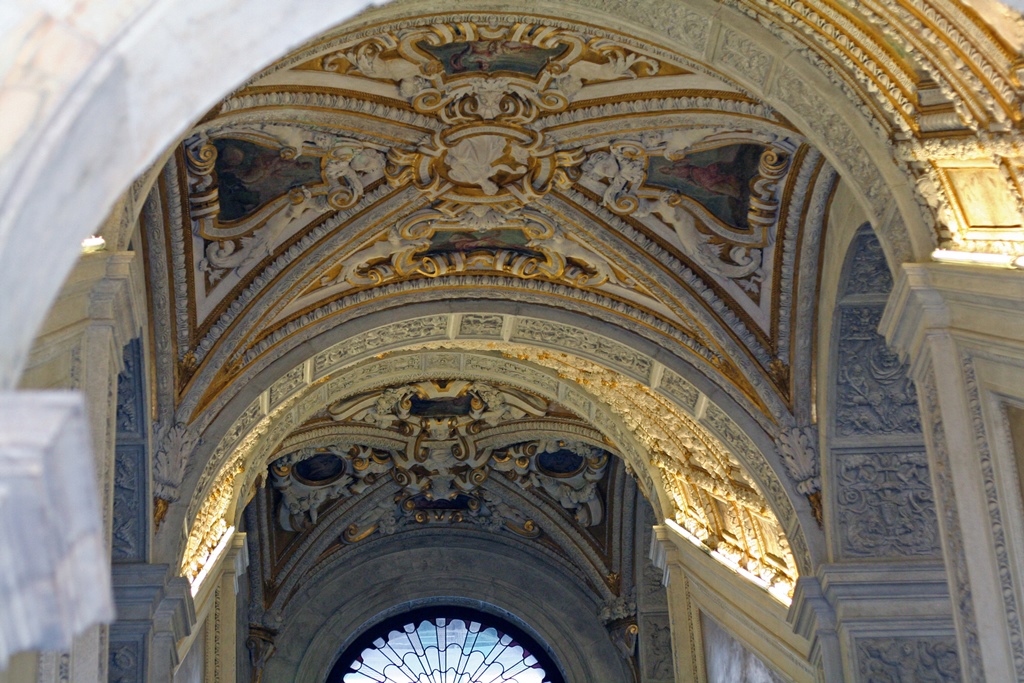
Ceiling Above Stairs
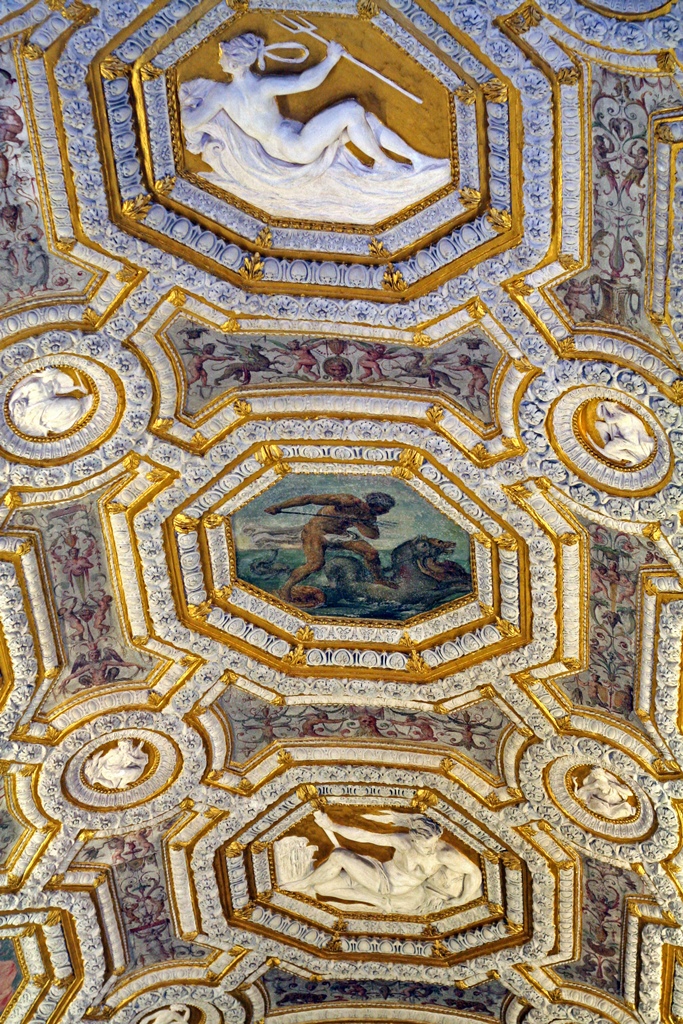
Ceiling Above Stairs
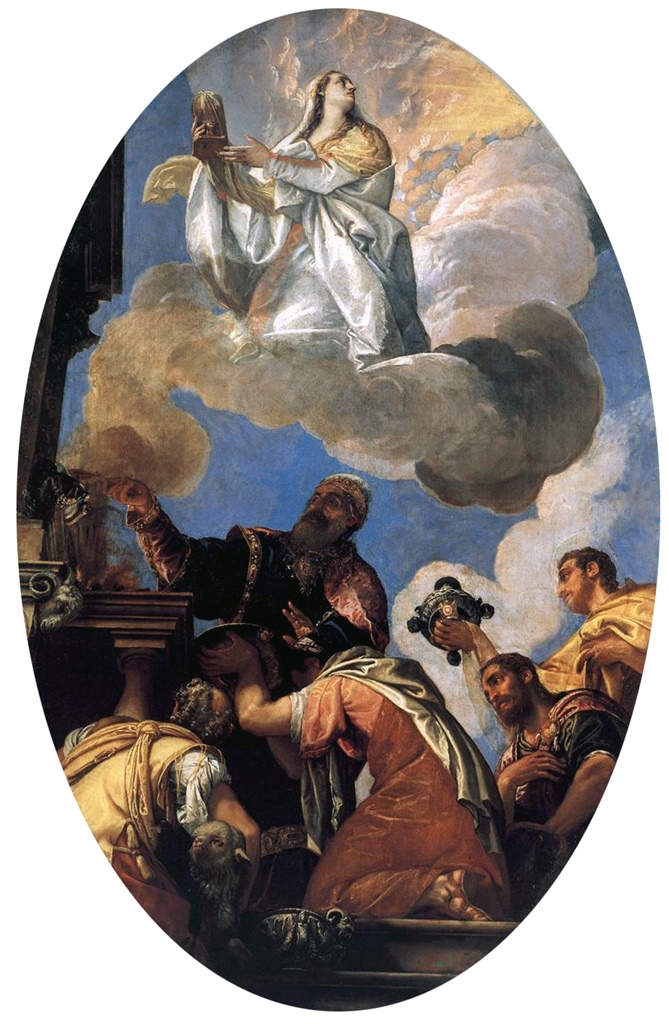
Ceiling Painting - Religion and Faith, Paolo Veronese (1575-77)
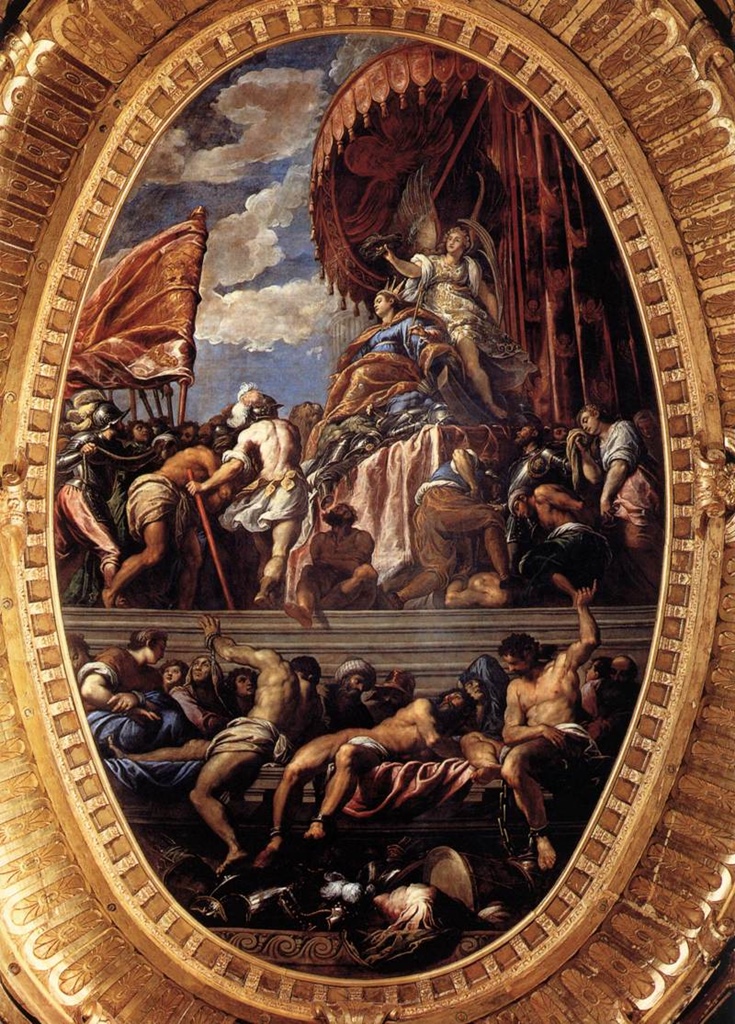
Venice Crowned by Victory, Palma il Giovane (1584)
Paradise, Tintoretto (1588-94), Sala del Maggior Consiglio
From the Palace building, we were able to use the Bridge of Sighs to cross a
small canal to the prison, which looked like a very unpleasant place to be
spending any time, but which was apparently an improvement over the jail cells
which had been in the main building before the building of the prison.
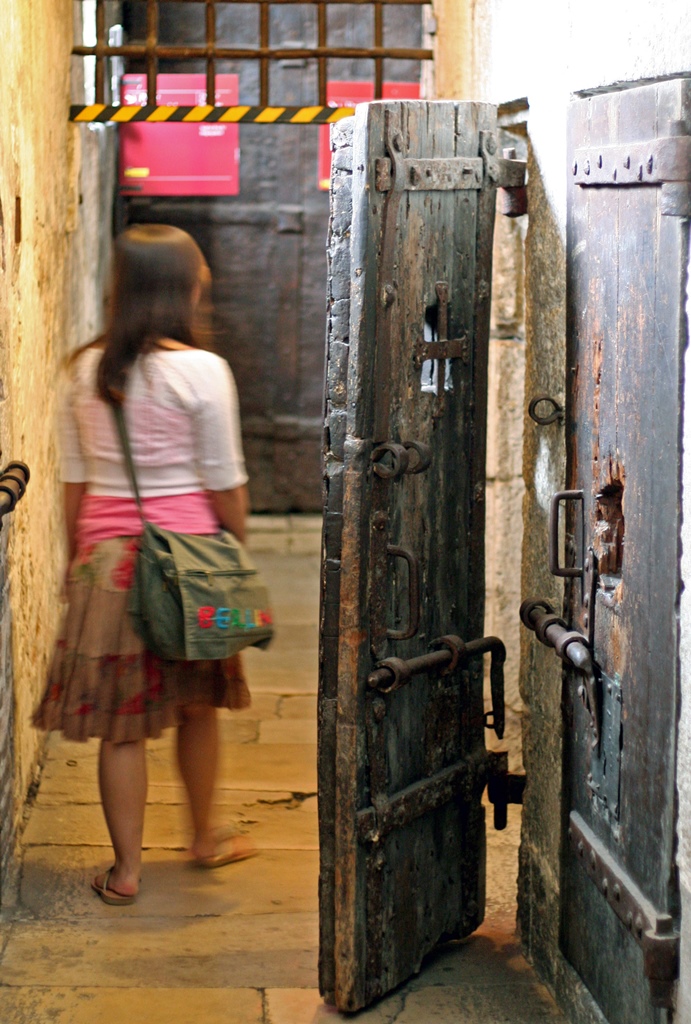
Connie in Jail
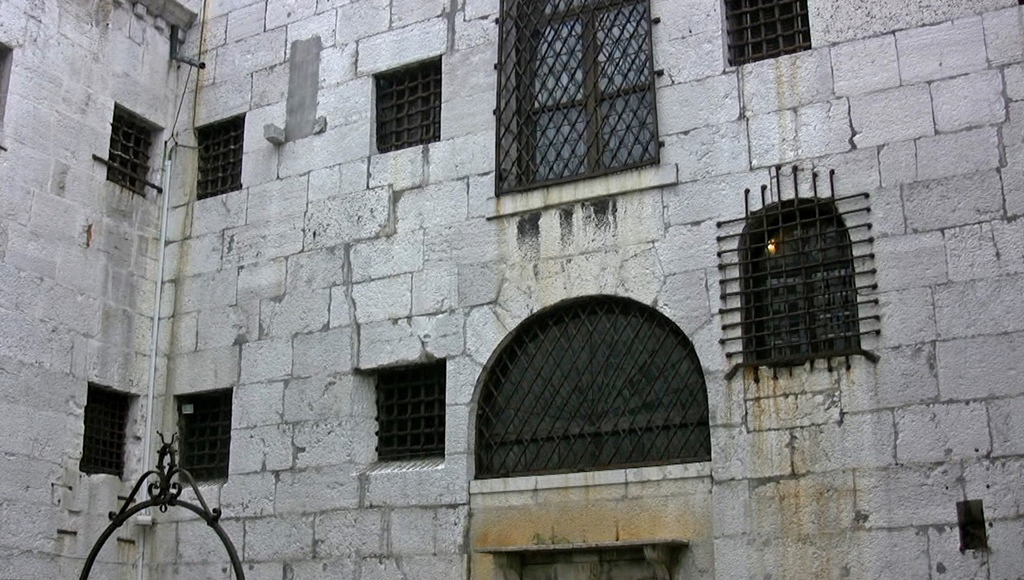
Prison Courtyard

Prison Courtyard and View from Bridge of Sighs
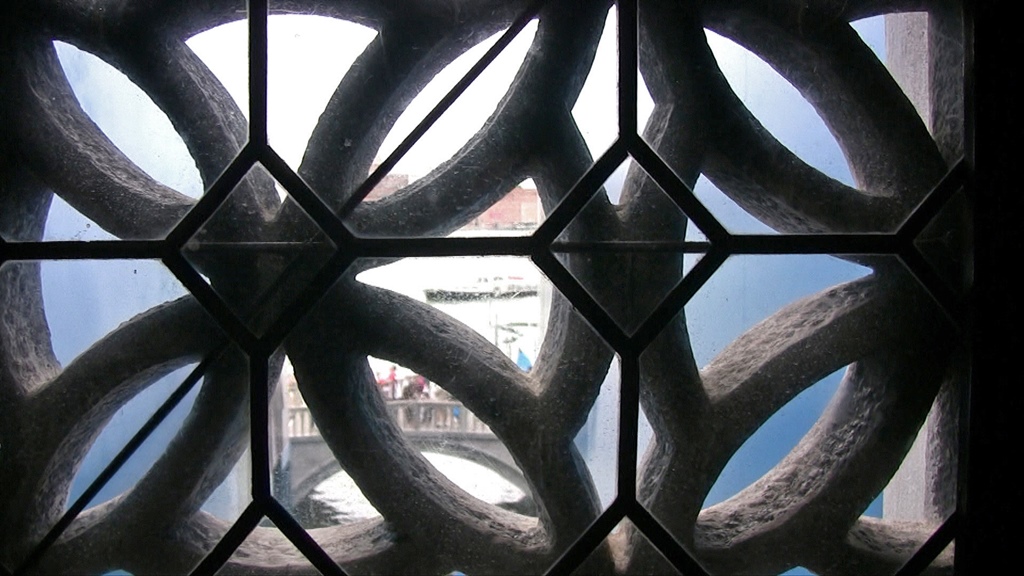
Window, Bridge of Sighs
San Giorgio Maggiore from Bridge of Sighs
After returning to the main building, we were routed back to the courtyard, where
we posed for pictures in front of the Giant's Staircase, a fenced-off outdoor
stairway flanked by statues of Neptune and Mars.

Courtyard and Foscari Arch
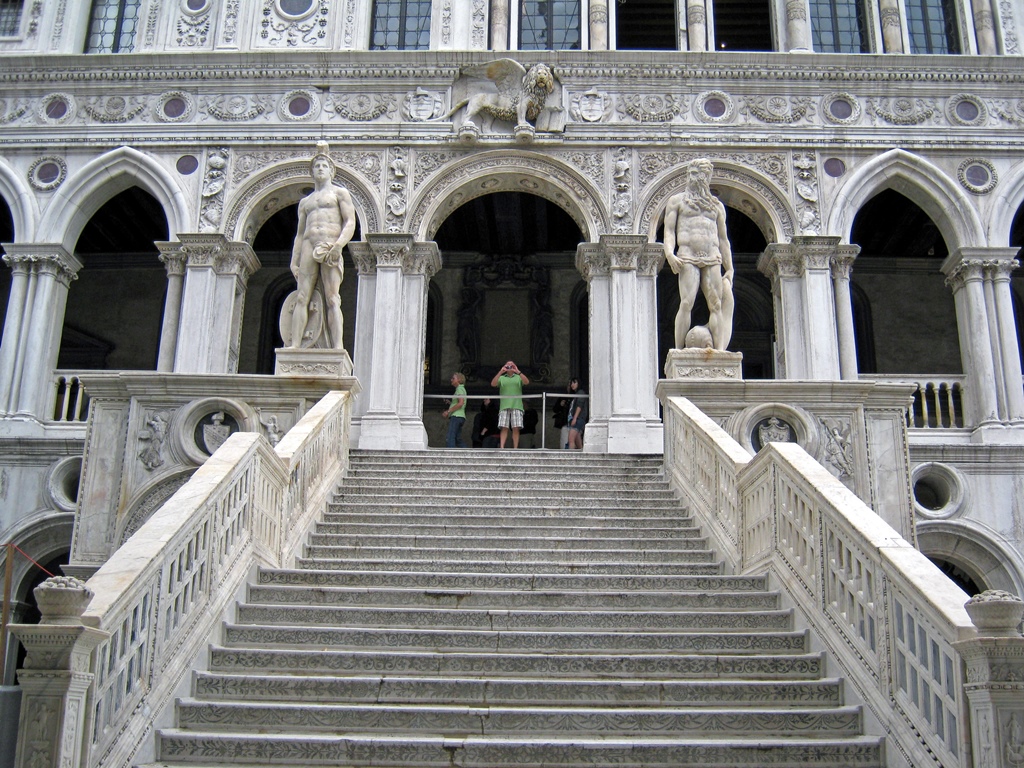
The Giants' Staircase
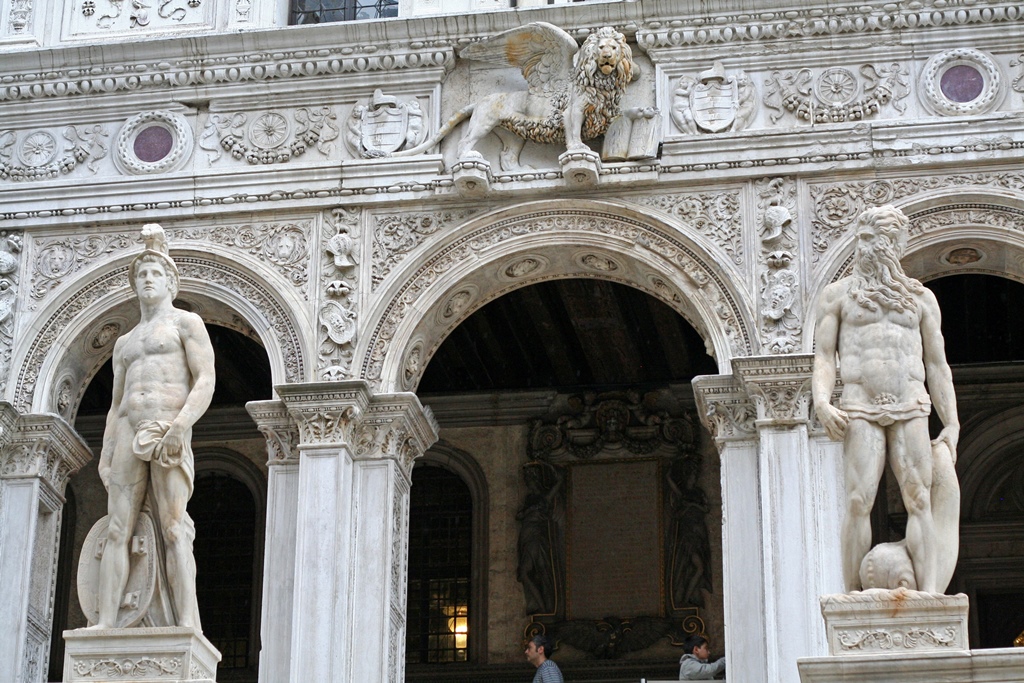
Mars, Neptune and Lion of St. Mark

The Giants' Staircase
Windows in Courtyard
This ended our visit, and we exited the Palace through a door which left us across
the Piazzetta from the campanile of Piazza San Marco.
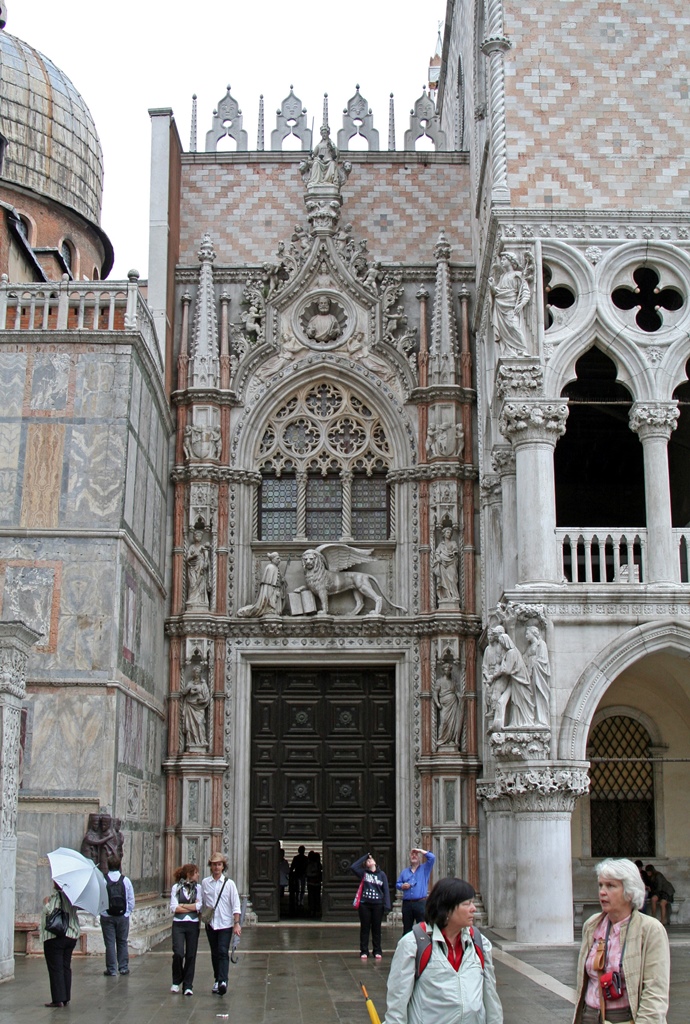
Porta della Carta (Exit)
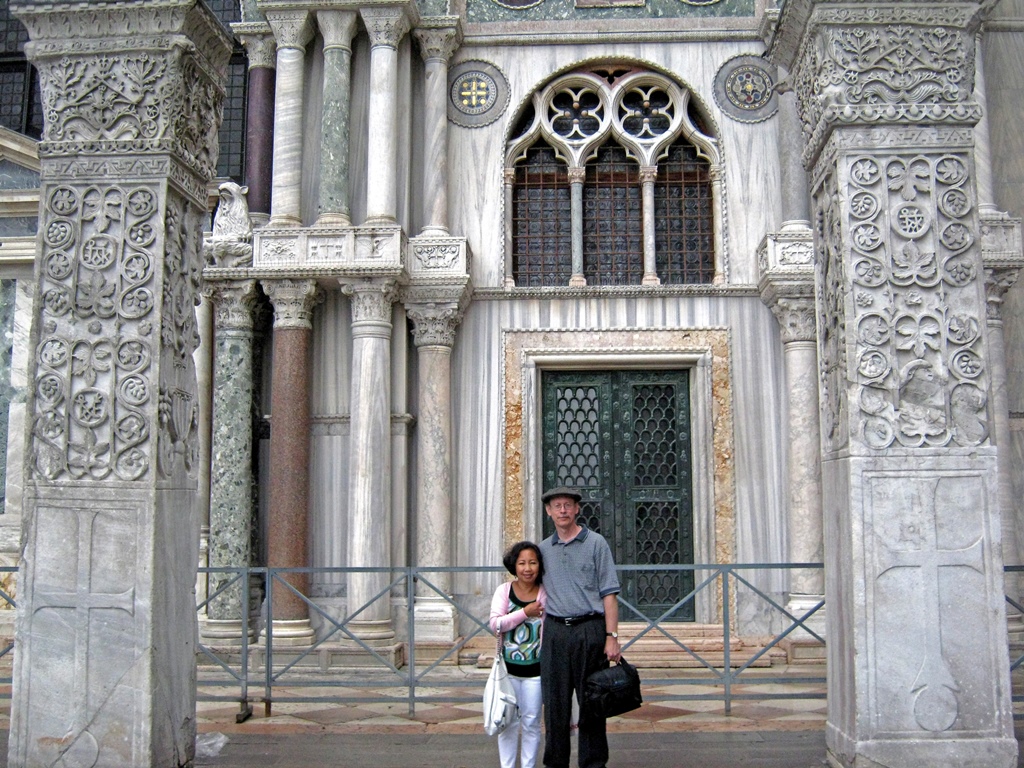
Outside the Exit
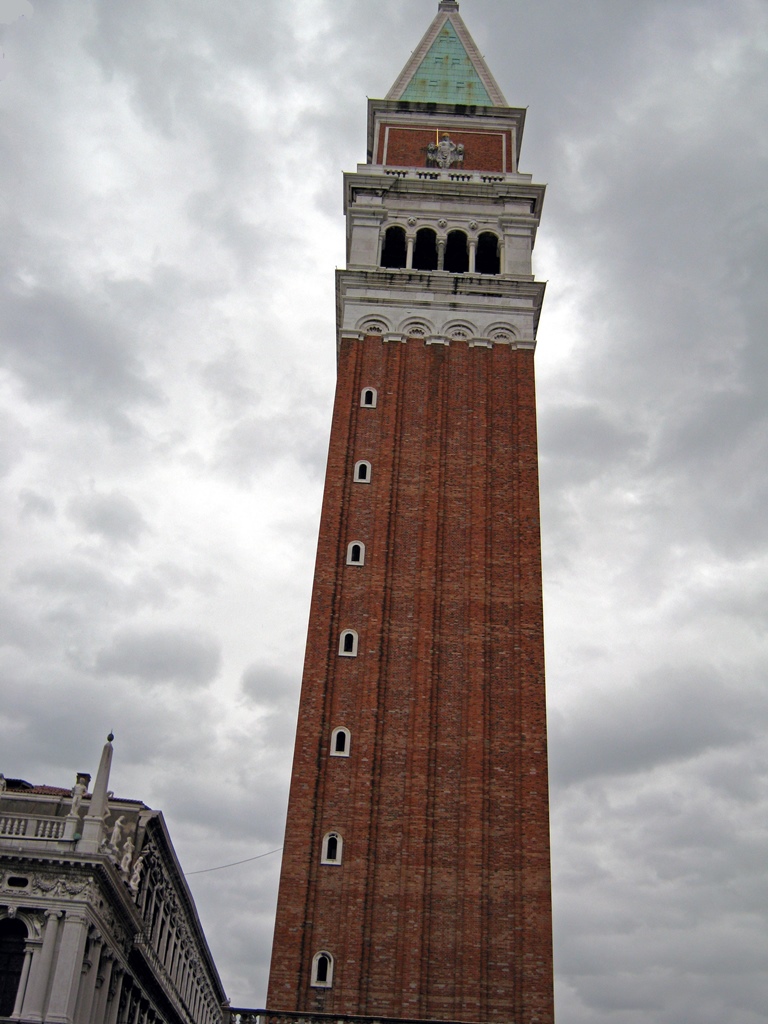
The Campanile
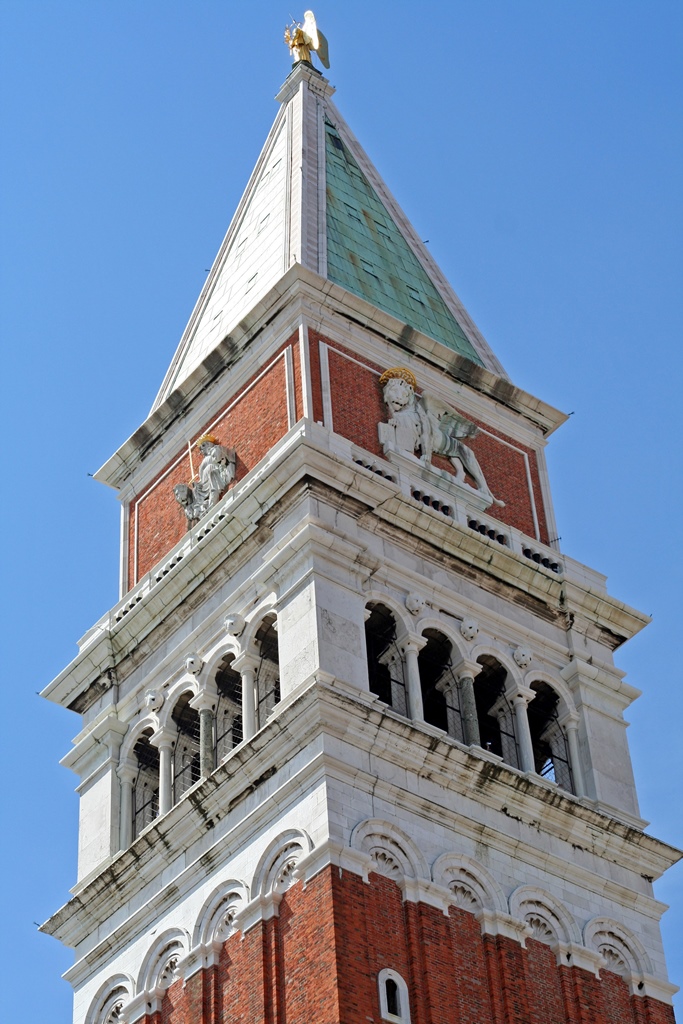
Campanile (Top, Earlier)
Despite the continuing drizzle, Connie and I were interested in going to the top
of the campanile, but Nella was not. Nella found a bench under the arcaded
passage along the side of the Doge's Palace, where she sat down and pulled out a
book to read. Connie and I walked across and paid 8 Euros apiece (there was
uncharacteristically no line, maybe because of the weather) and rode the elevator
to the top.
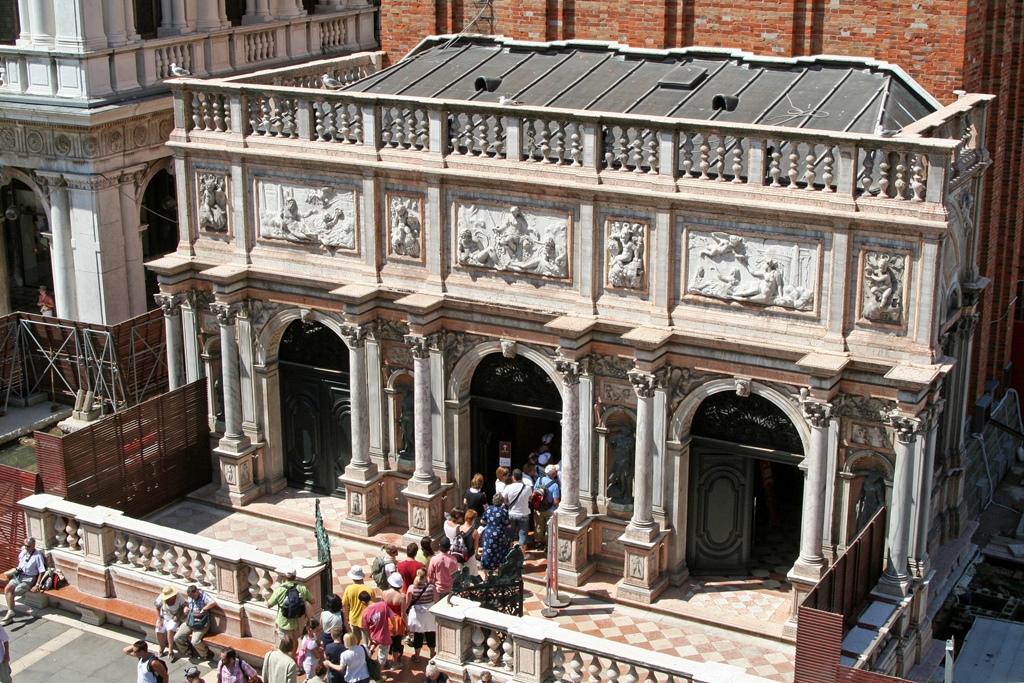
Campanile Entrance - Typical Line
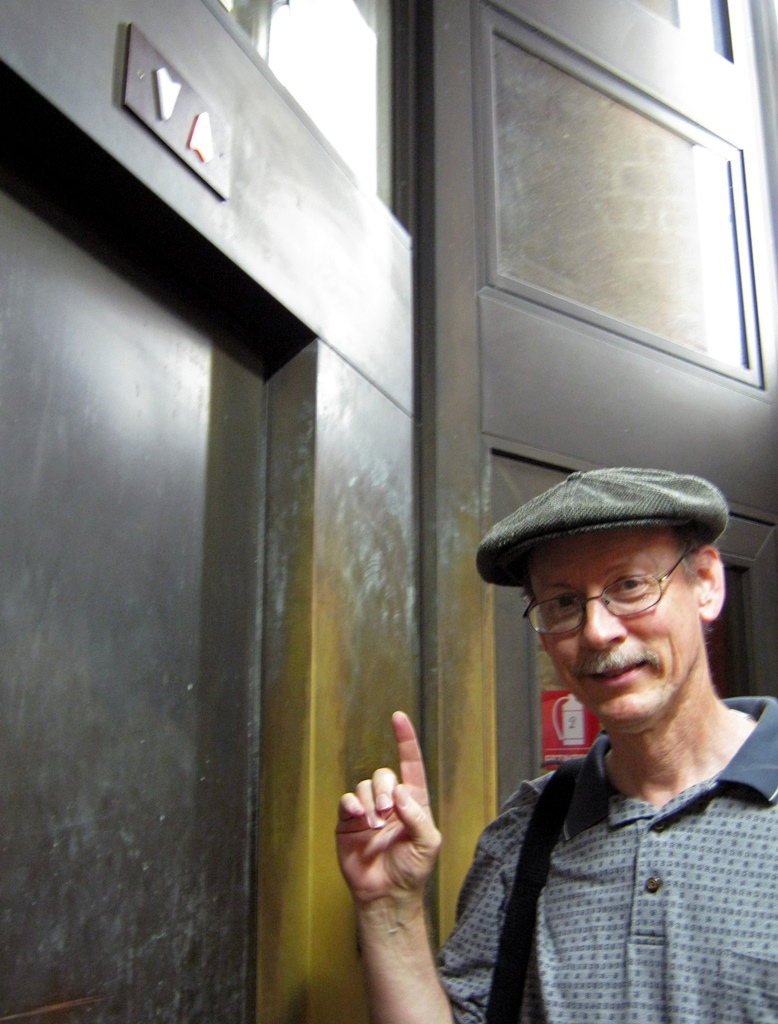
Bob and Elevator
The current campanile is not the original one, having been completed less than 100 years
ago. Its predecessor was finished in the early 16th Century, but collapsed on July 14, 1902.
There were no fatalities, as warning cracks appeared well before the collapse, and the
campanile politely collapsed in a way that didn't do severe damage to any other structures
(except for the Loggetta at its base). Many donations came in for its reconstruction, and
the new campanile opened in 1912, this time with an elevator in its center (most welcome, as
the tower is 323 feet tall). Apparently some instability in its foundation has recently
been found, as there was construction going on to strengthen it during our visit.
Undaunted by the danger, we enjoyed the spectacular 360-degree view immensely.
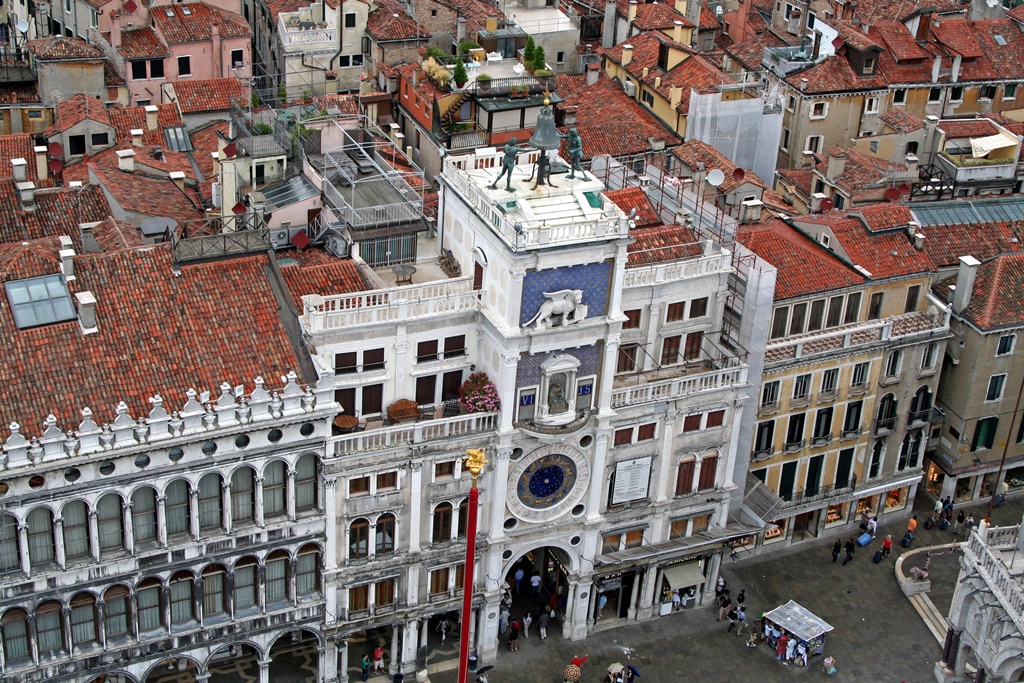
Clock Tower
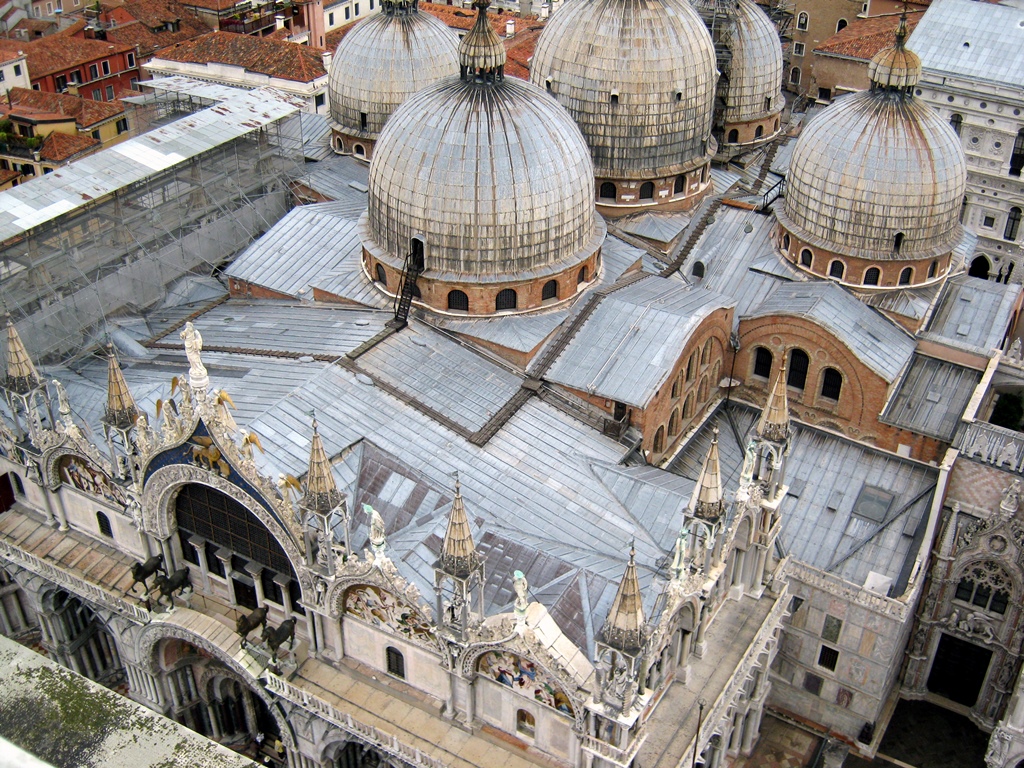
Roof of Basilica
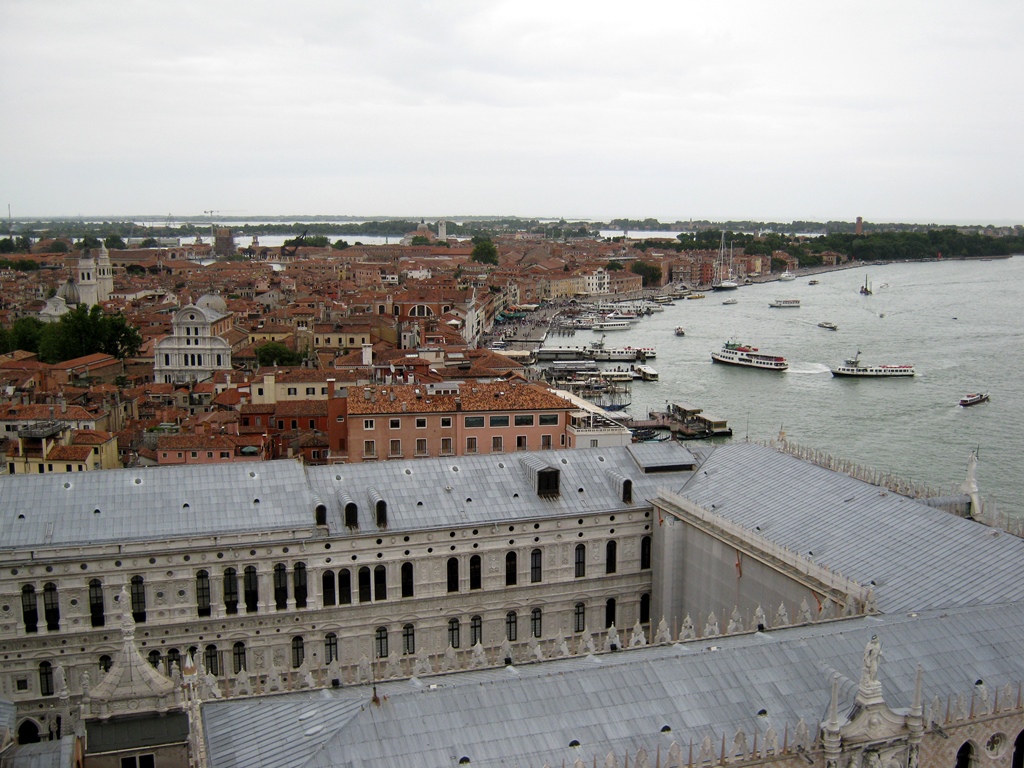
Doge's Palace and Waterfront

View to the East
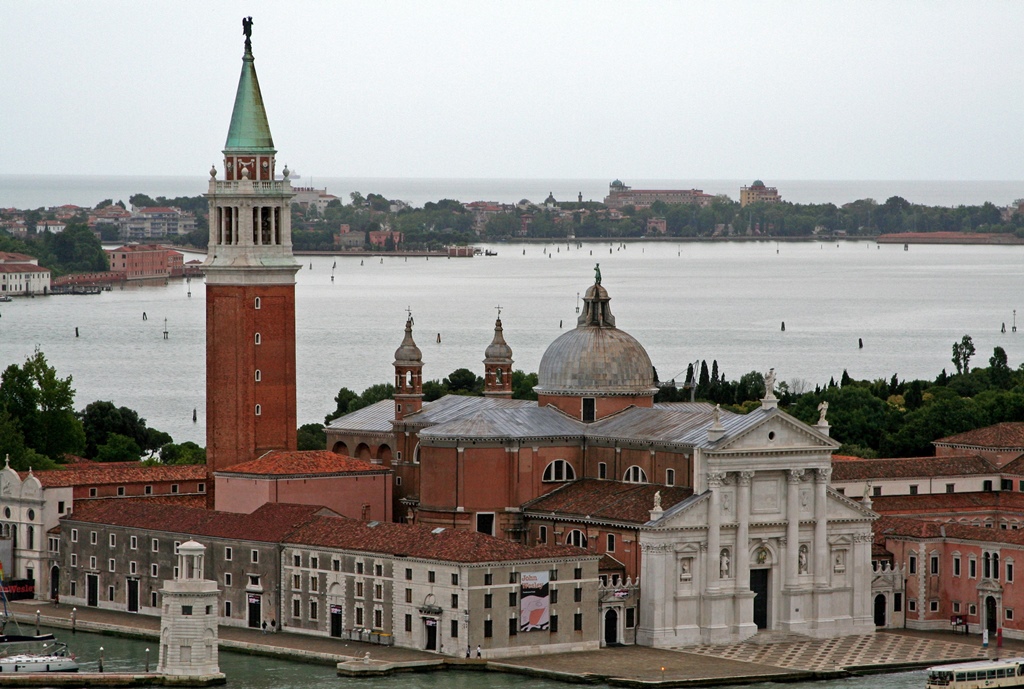
San Giorgio Maggiore
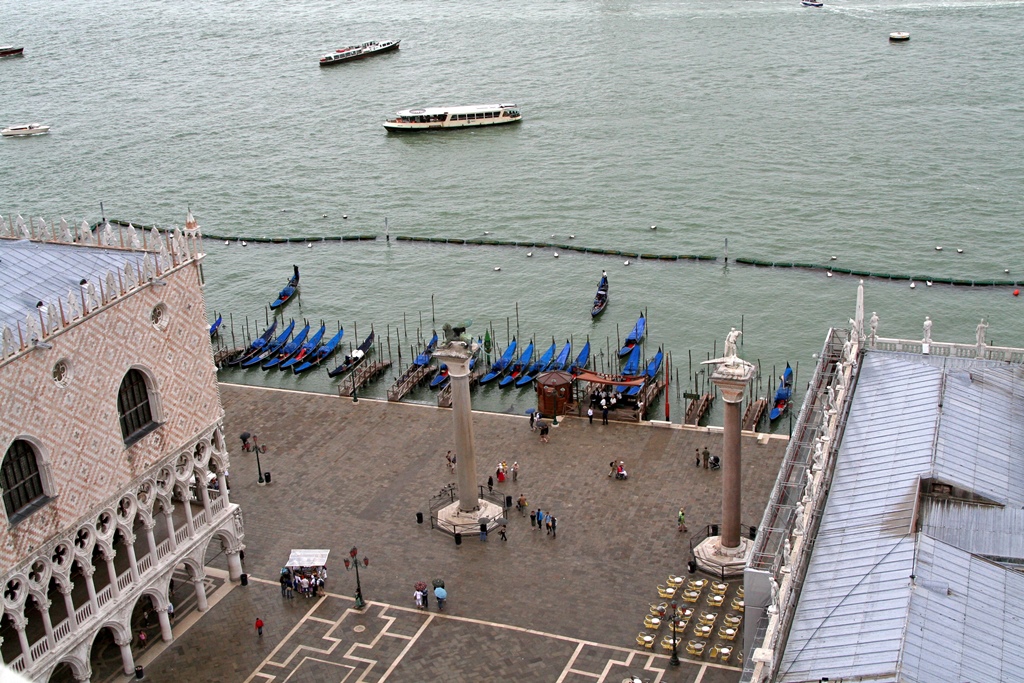
Piazzetta and Gondolas
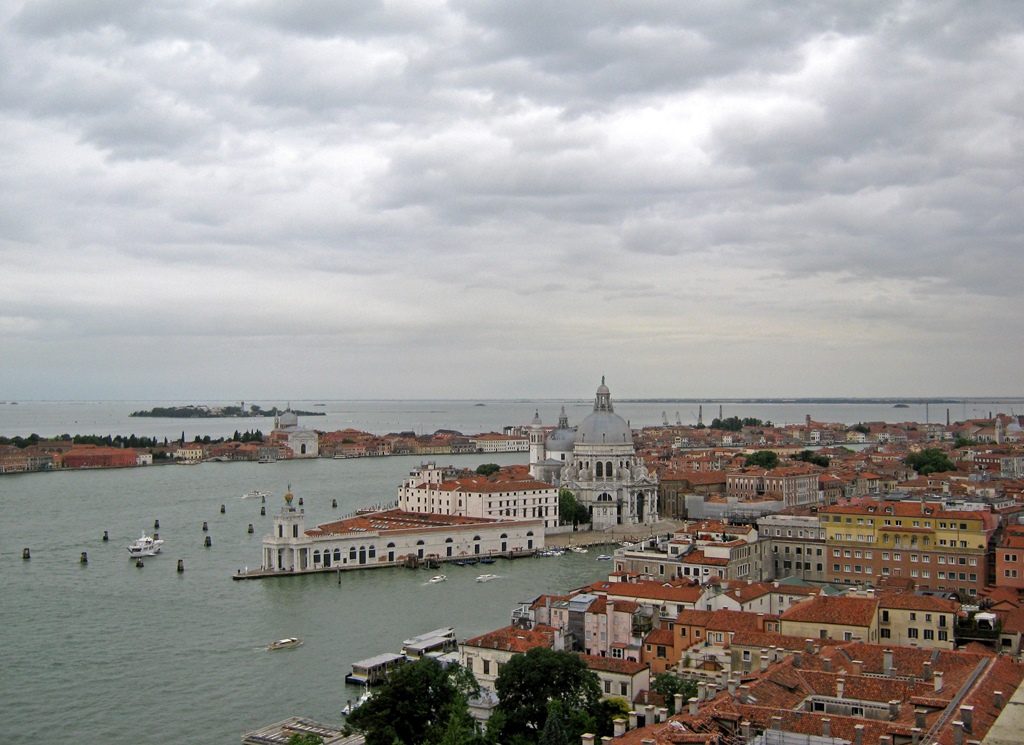
End of Grand Canal
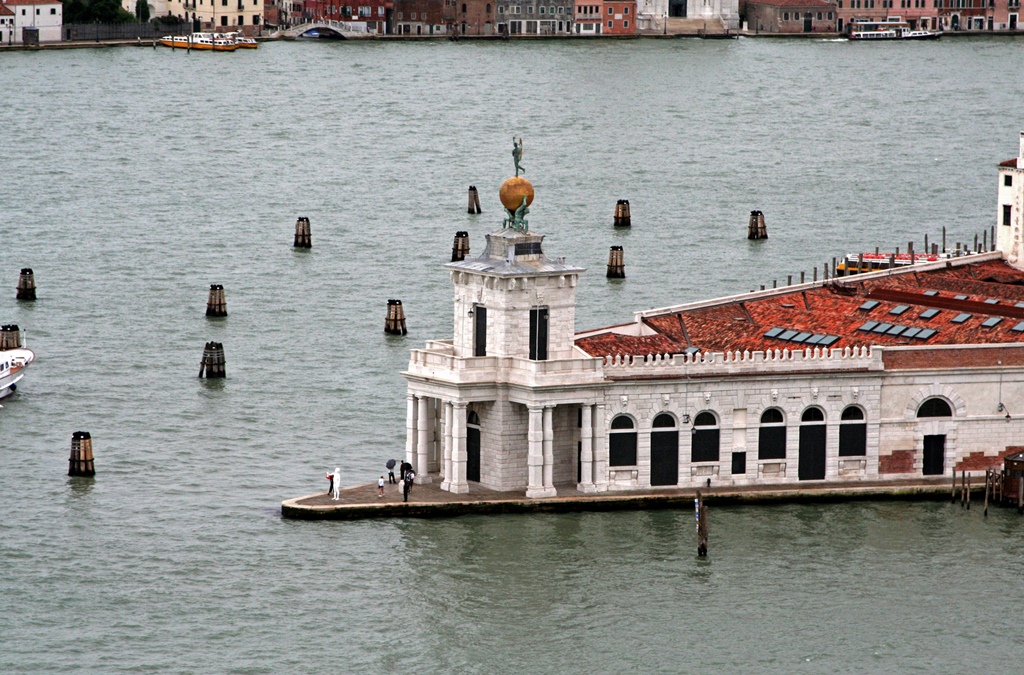
Dogana di Mare
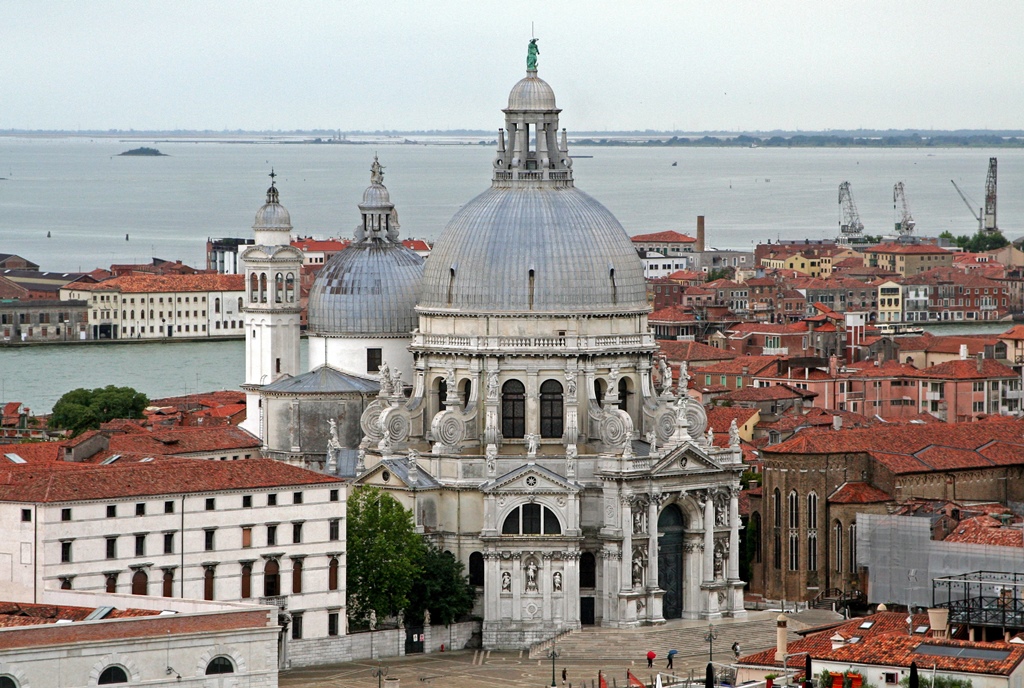
Santa Maria della Salute

View to the South
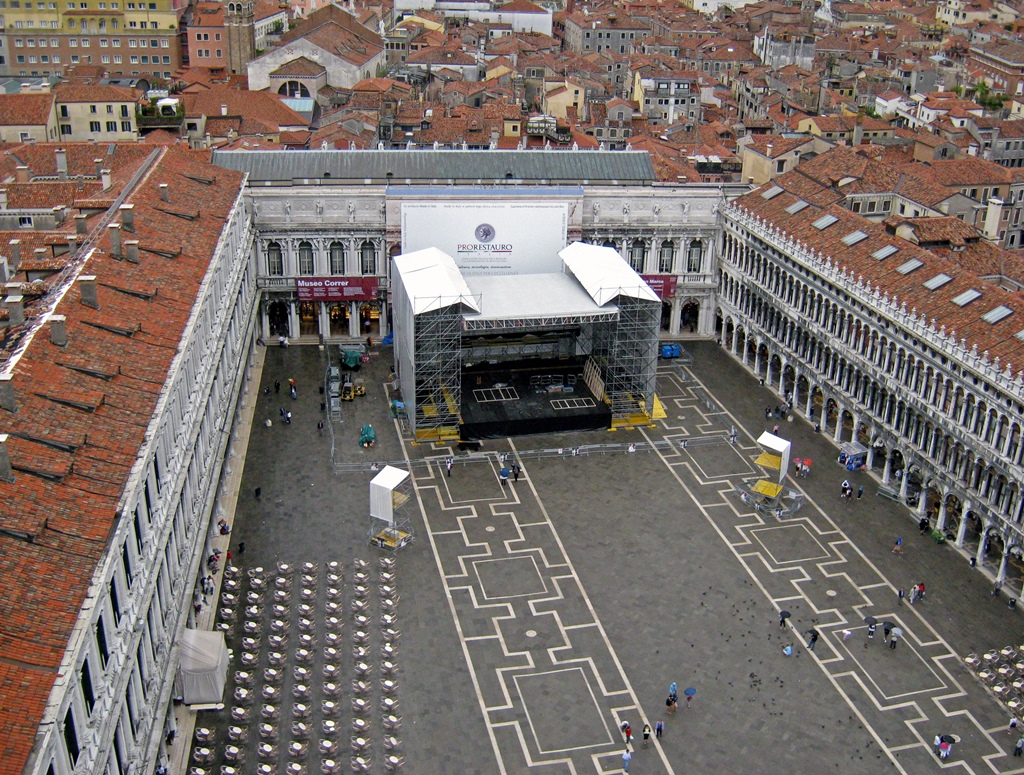
Piazza San Marco
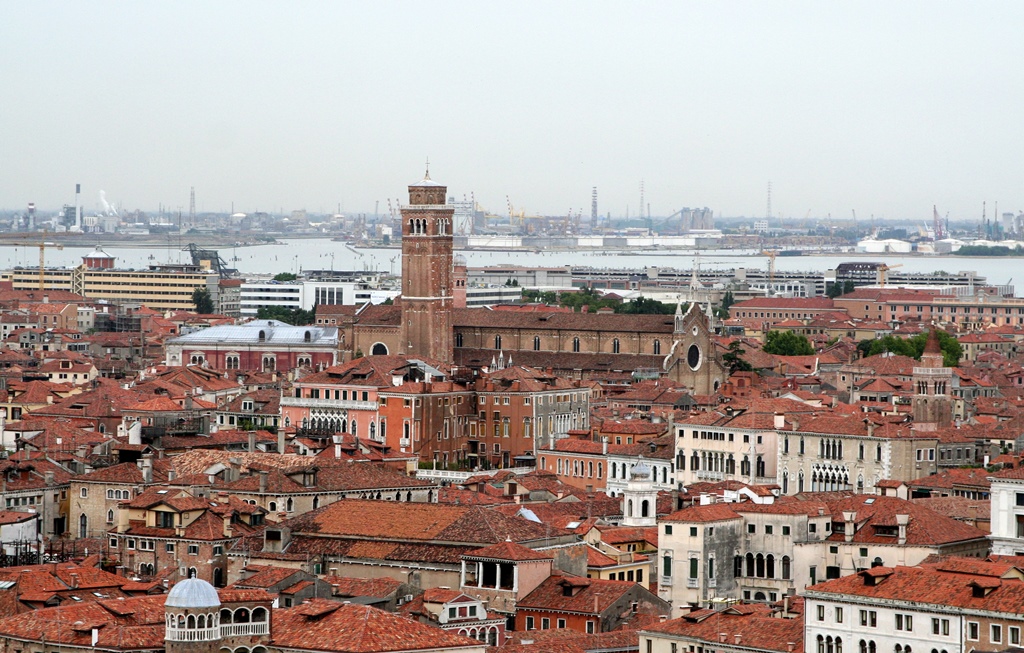
Santa Maria Gloriosa dei Frari Church

View to the West
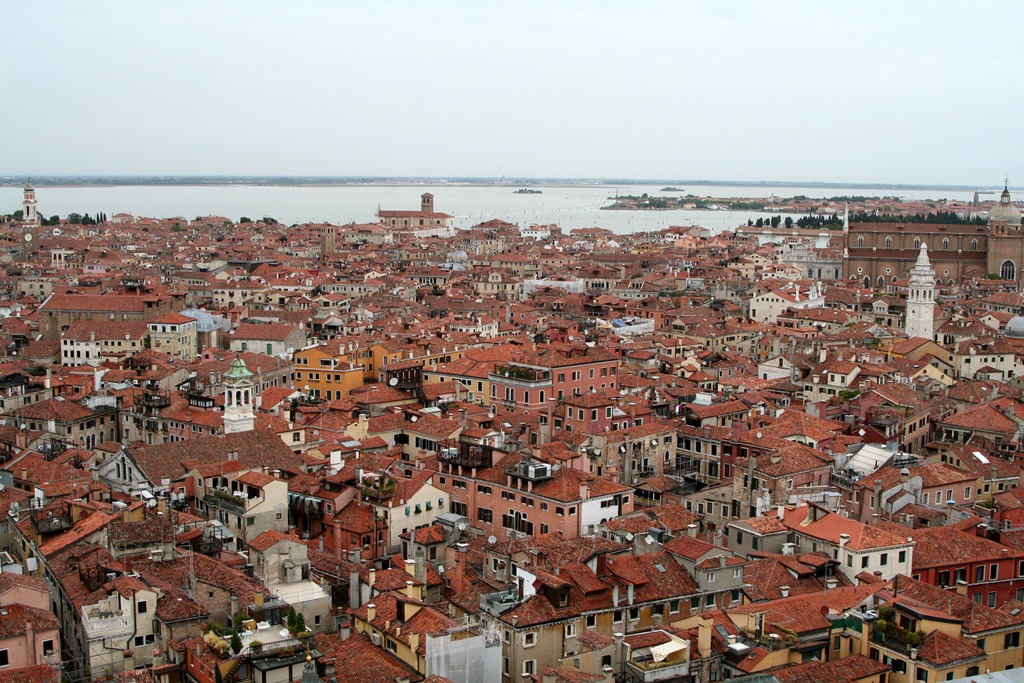
View to the North
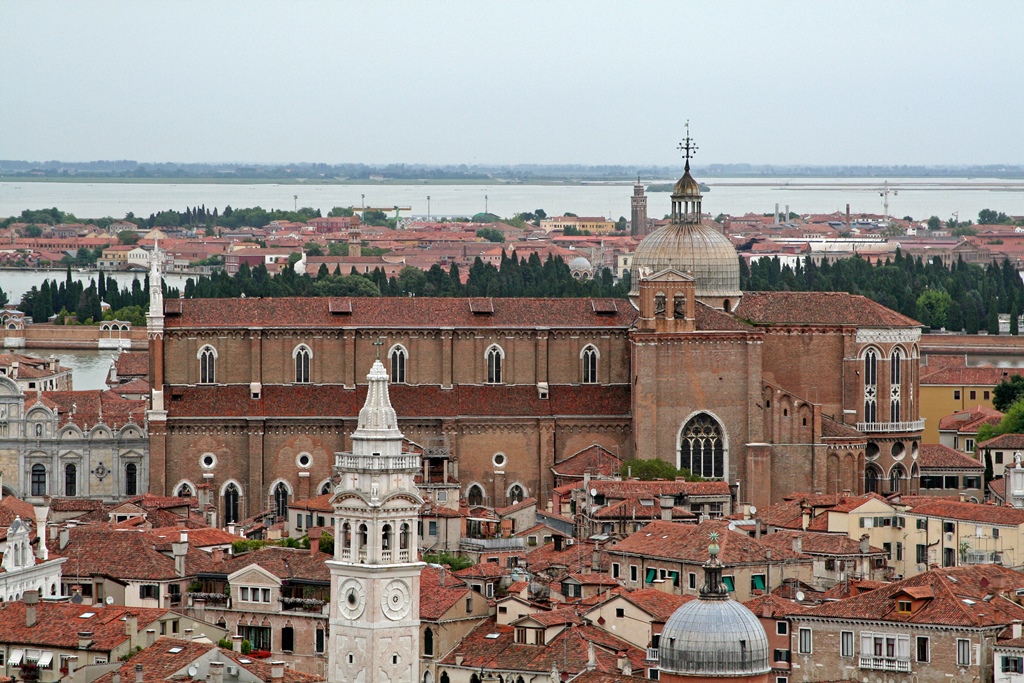
Santi Giovanni e Paolo Church

View to the North
And then it was 6:30, and the gigantic bells started to move. Huge bells can make a
lot of noise, which is undoubtedly the idea, but when you're only a few feet away from
them, this is way more noise than is strictly necessary, and the sound, which went on
for five minutes or so, can be felt in one's internal organs as well as heard.

The Bells

The Bells, Continued
With ears ringing following this performance, we descended the elevator and rejoined Nella.
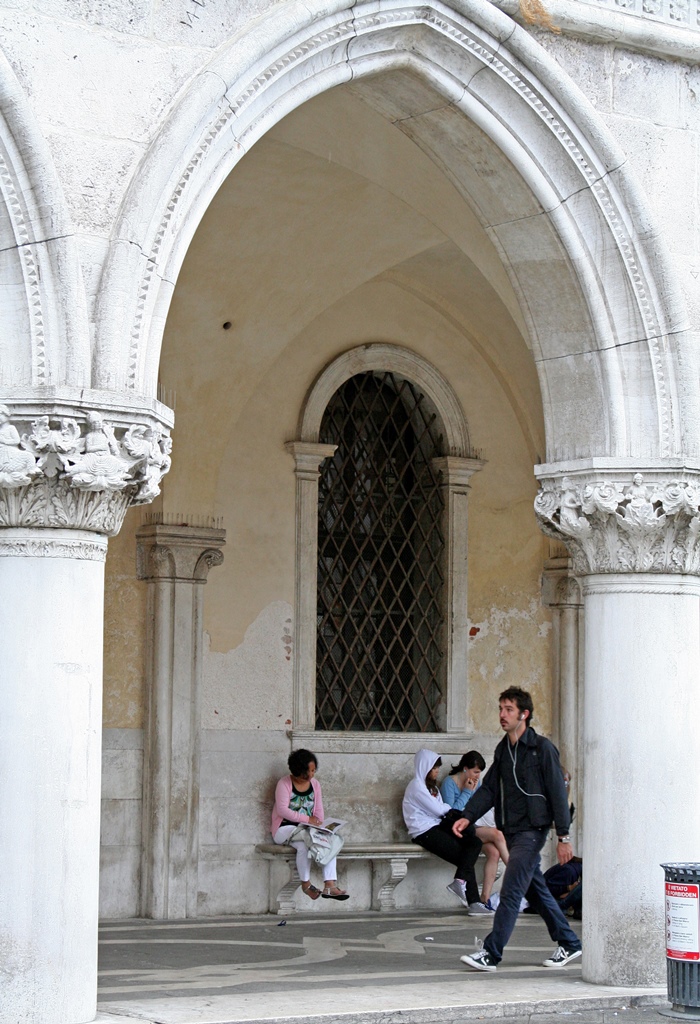
Nella Reading Book
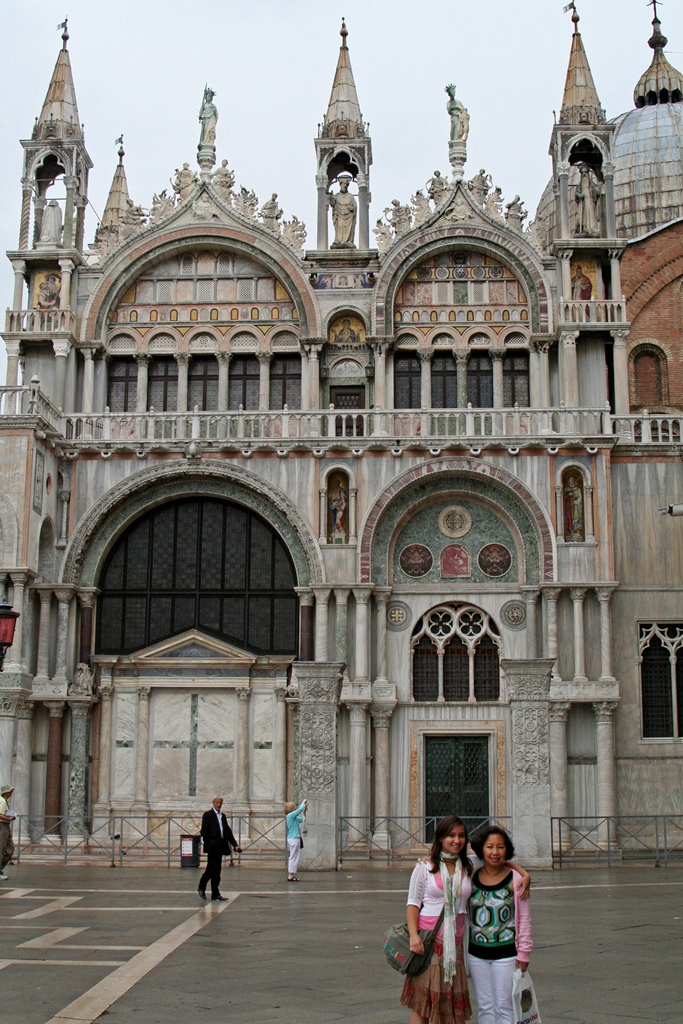
South End of Basilica
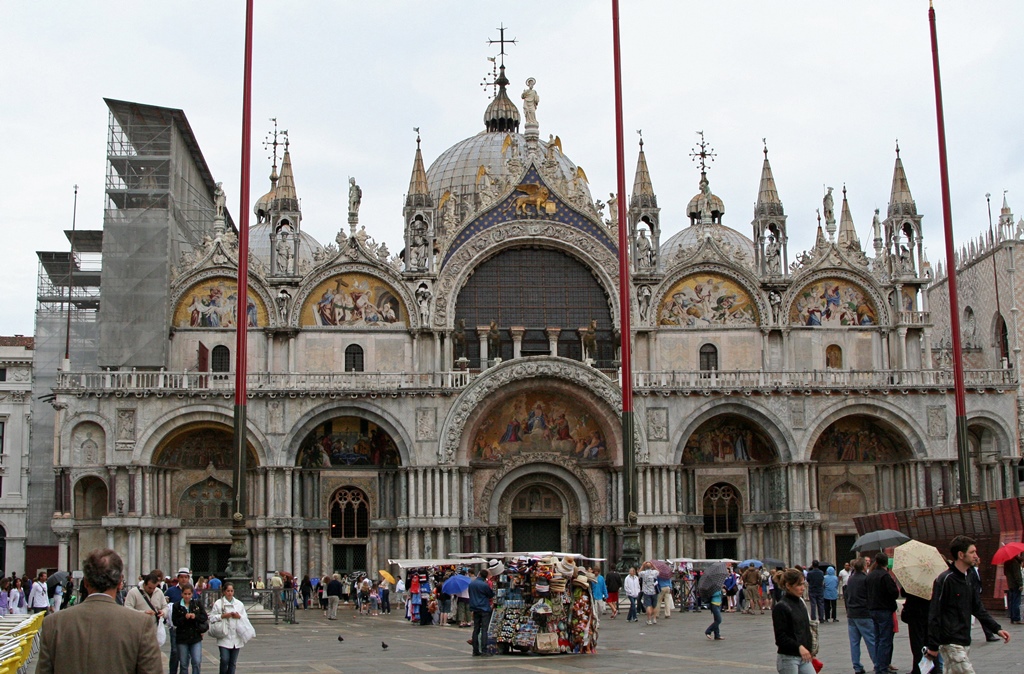
The Basilica

The Basilica
Jewelry Shopping
Then we collected Philip from the hotel to which he had returned and found dinner.
After dinner we returned to our respective hotels to rest up for our upcoming
travel day. Though after dark, Bob went out and took a few last pictures and
listened to some of the live music performed every evening in the Piazza.

Basilica and Orchestra
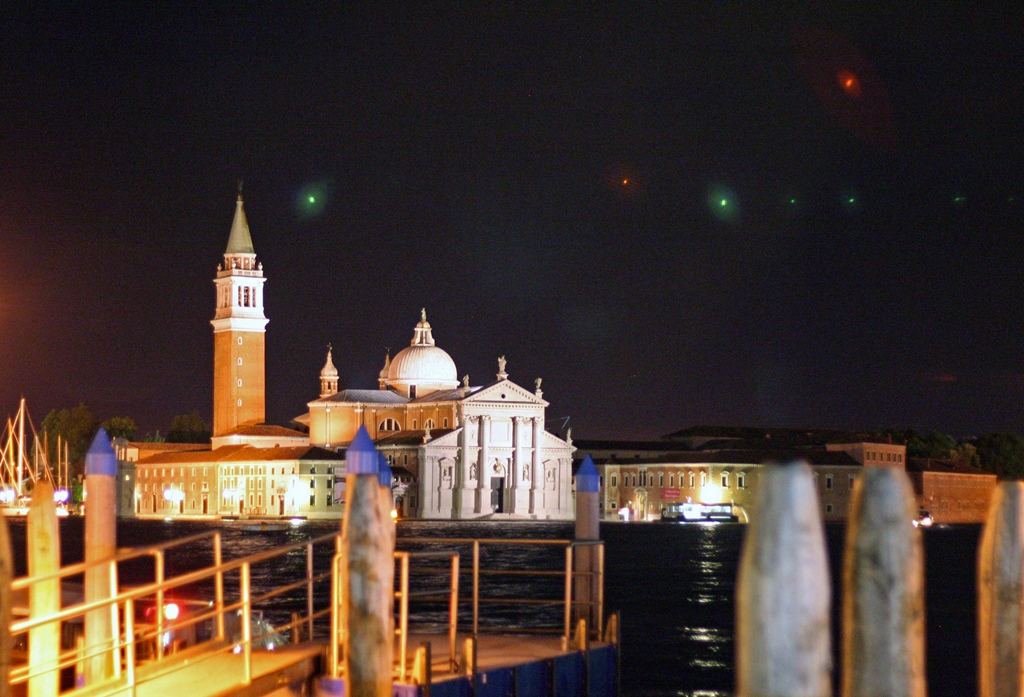
San Giorgio Maggiore
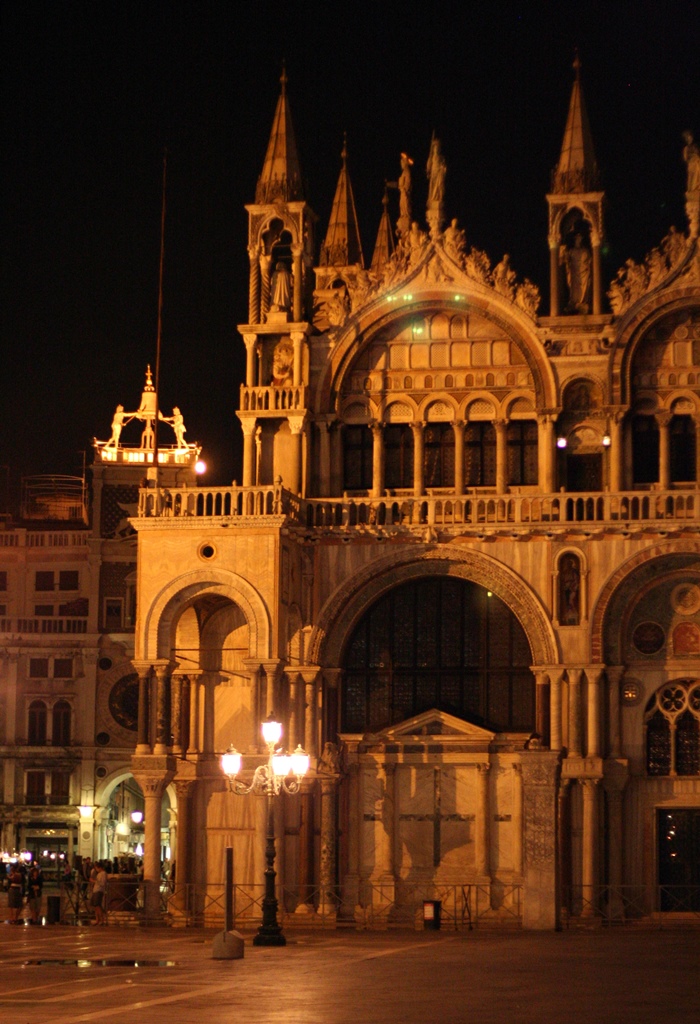
South End of Basilica
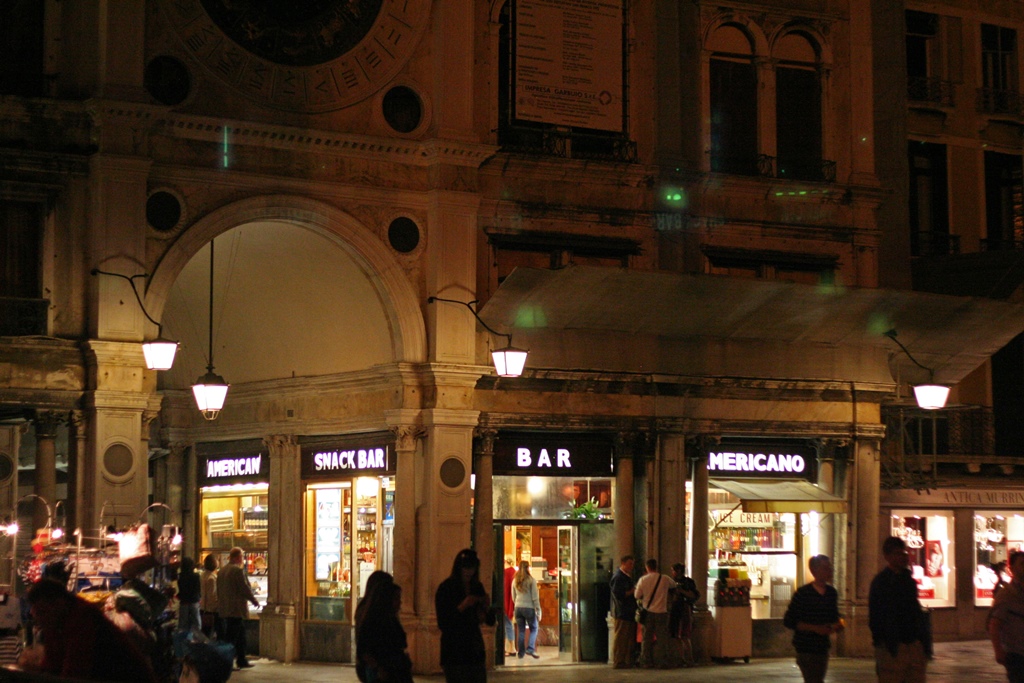
Bar Americano Under Clock Tower

Orchestra
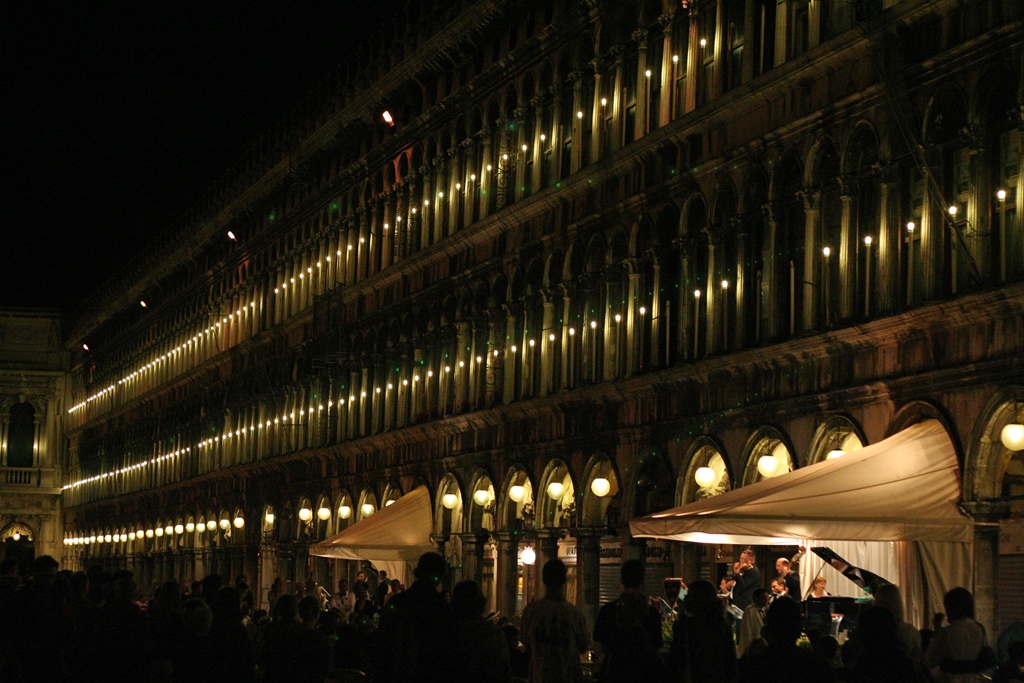
Procuratie Vecchie

